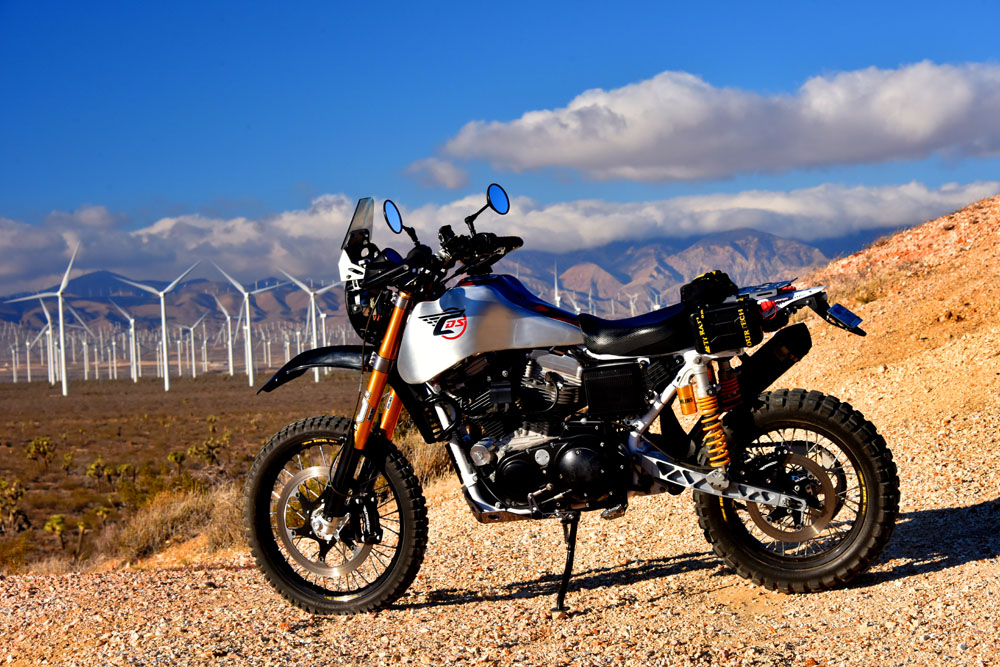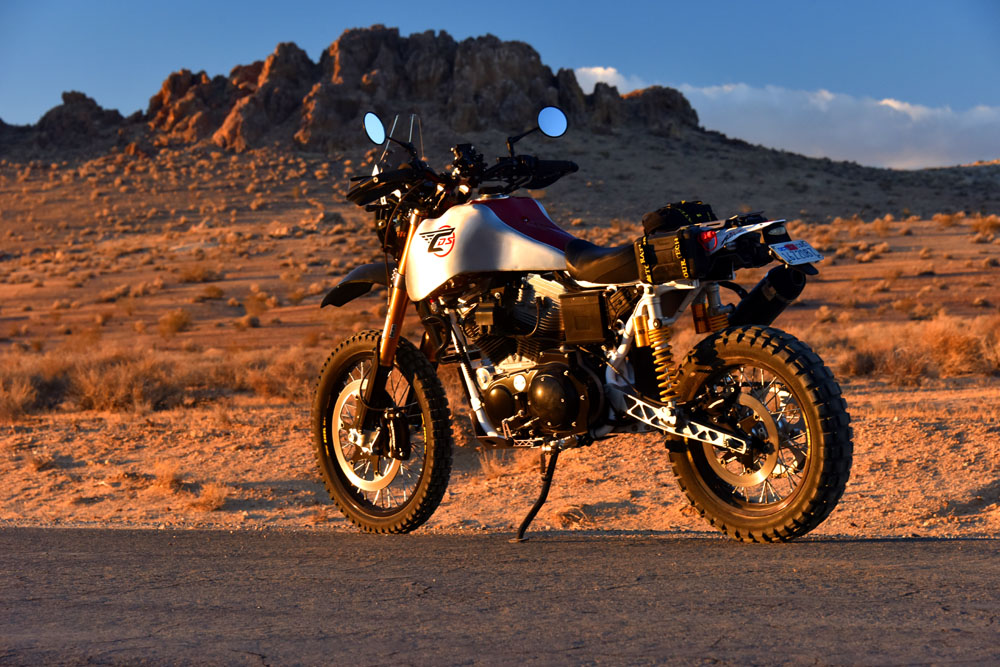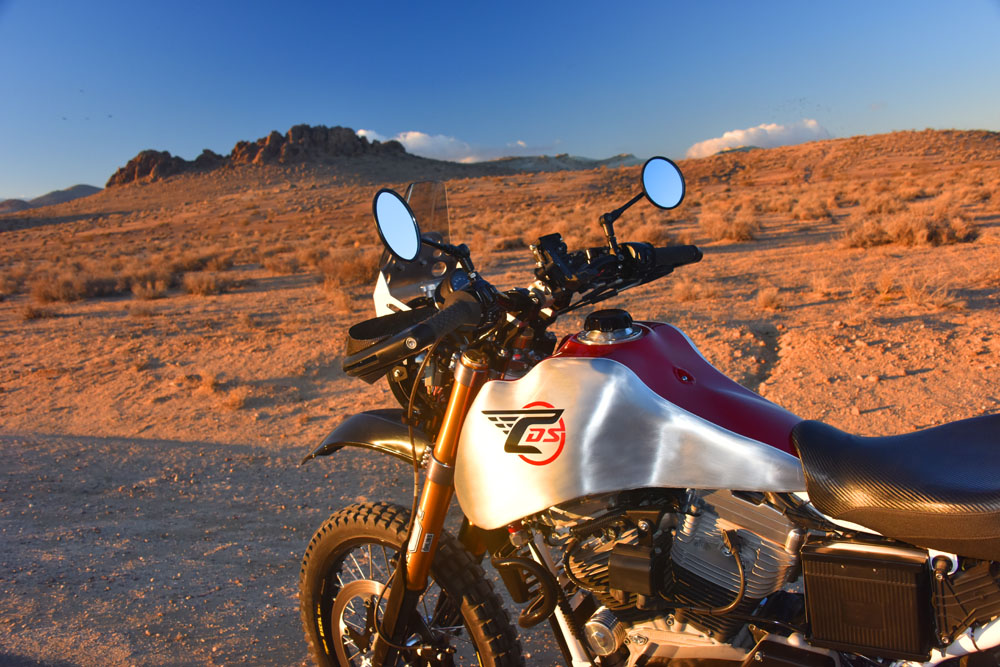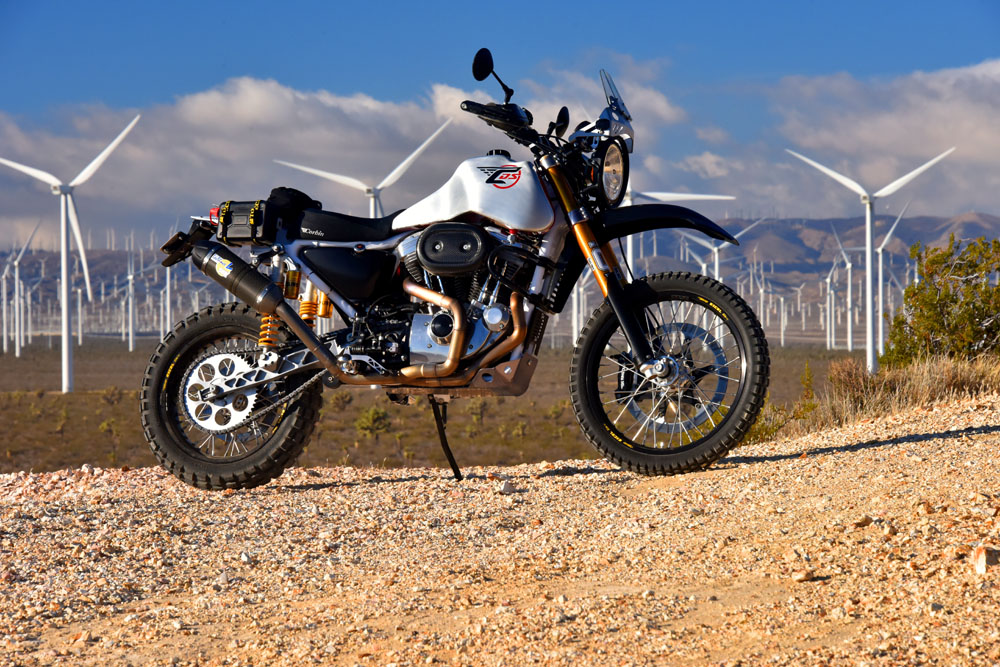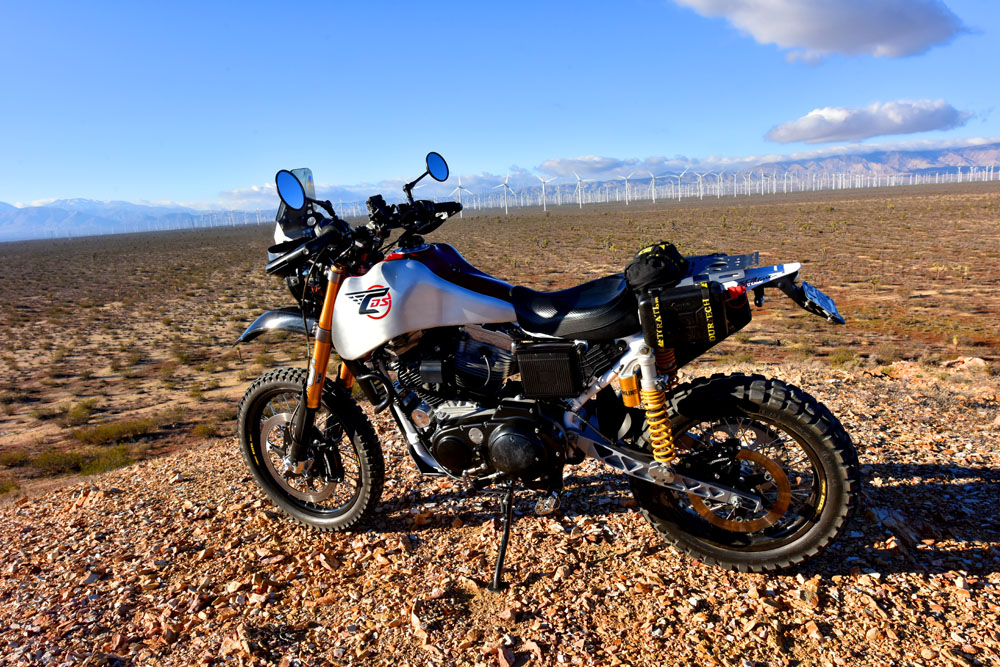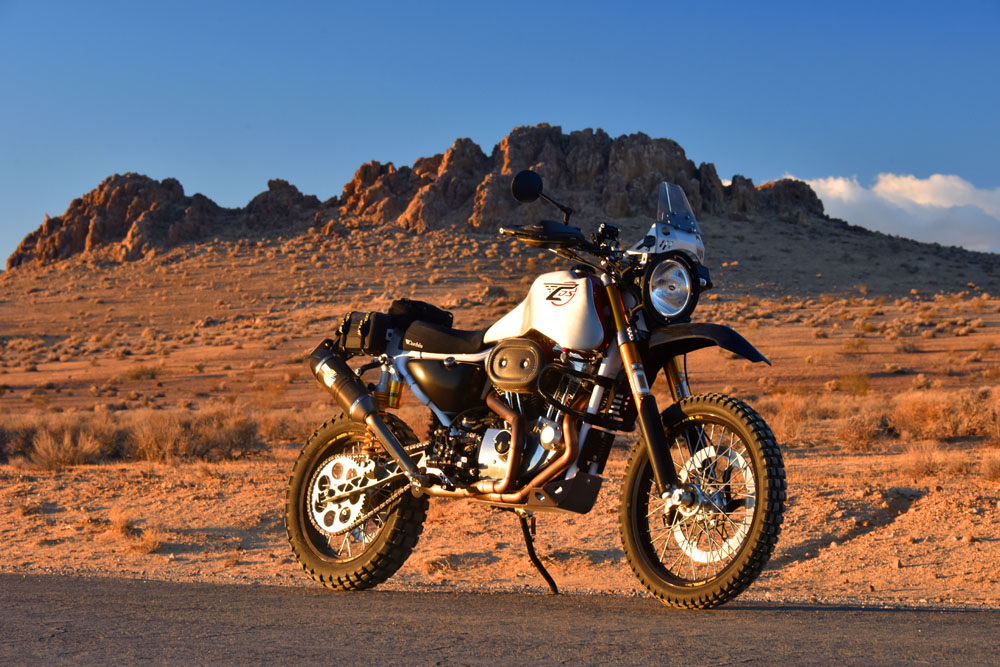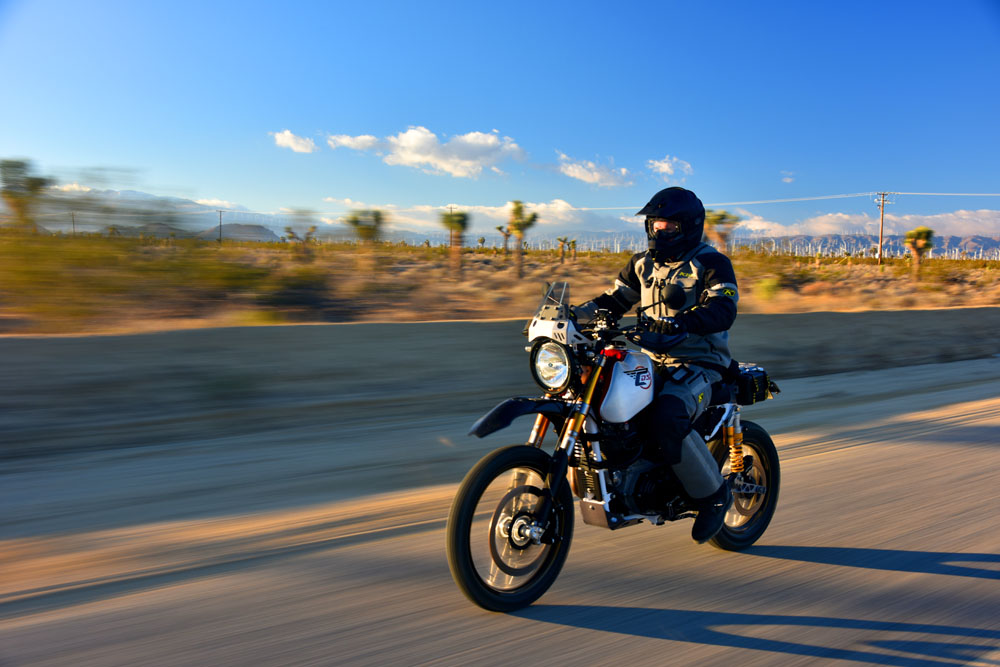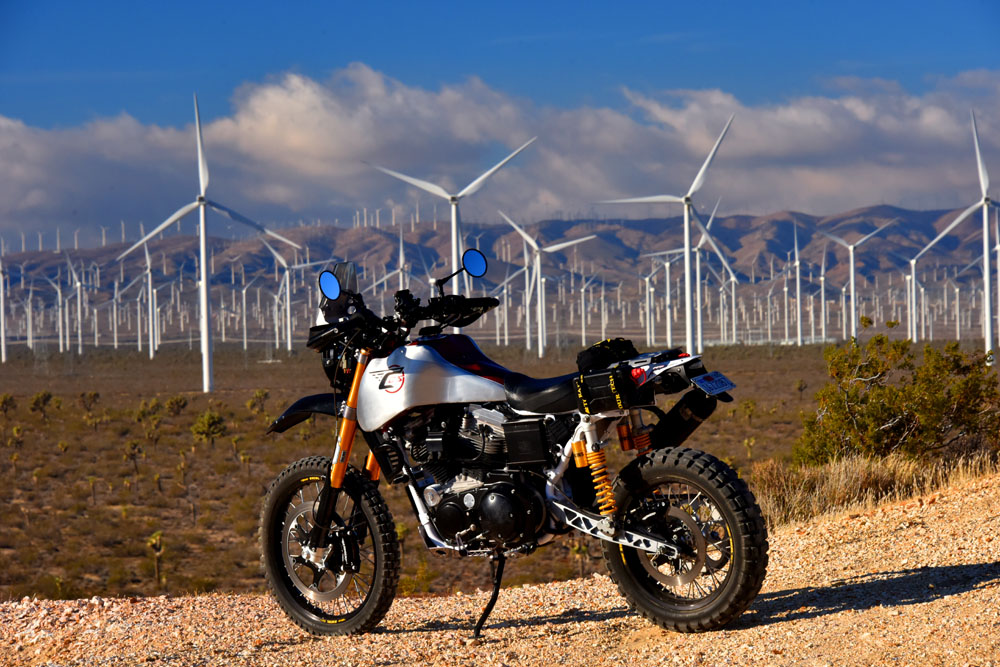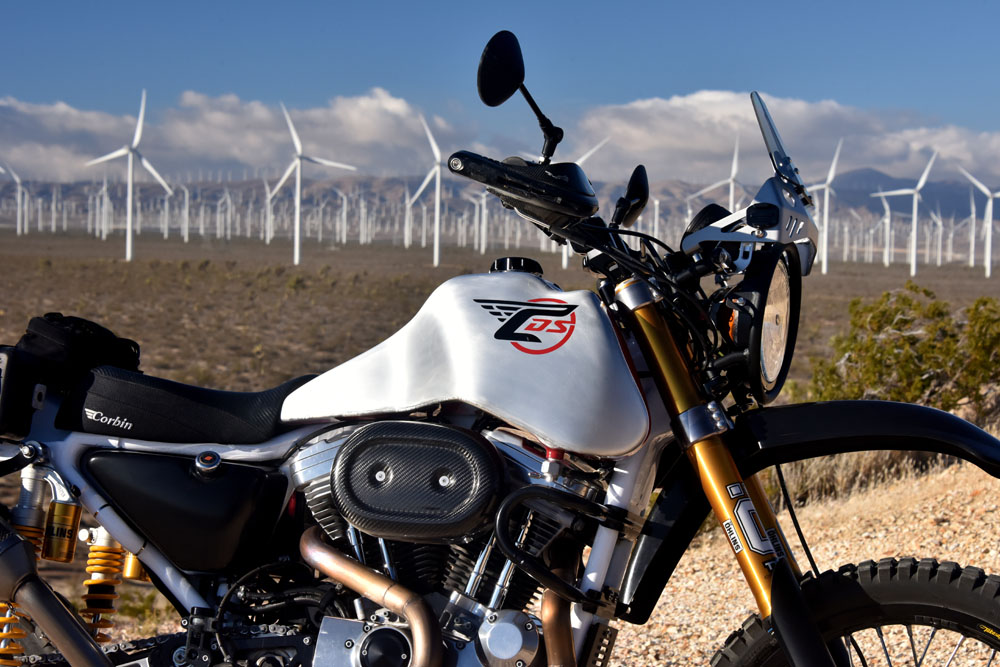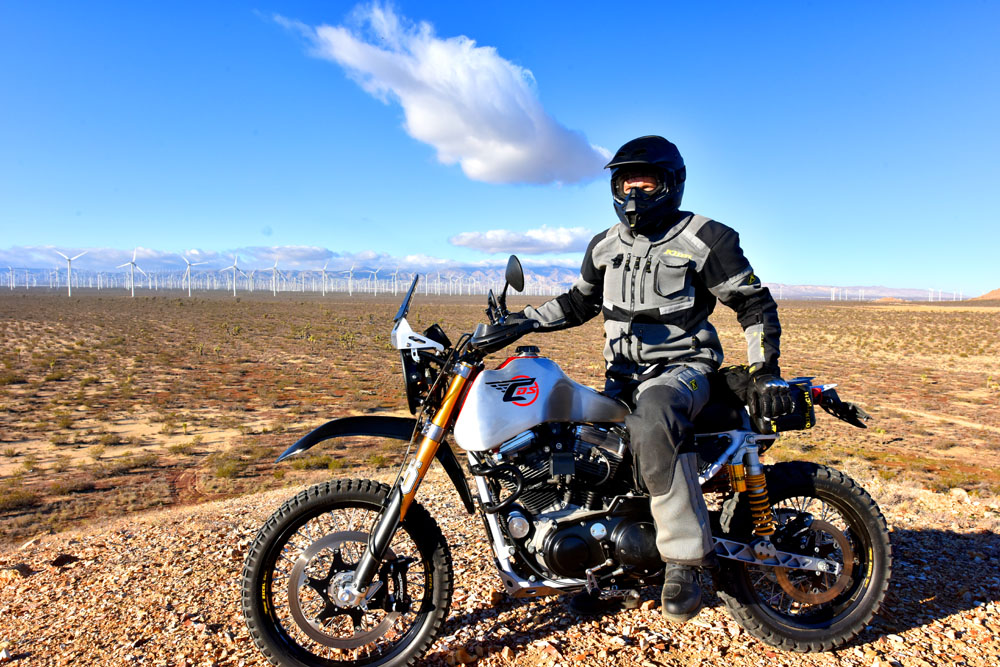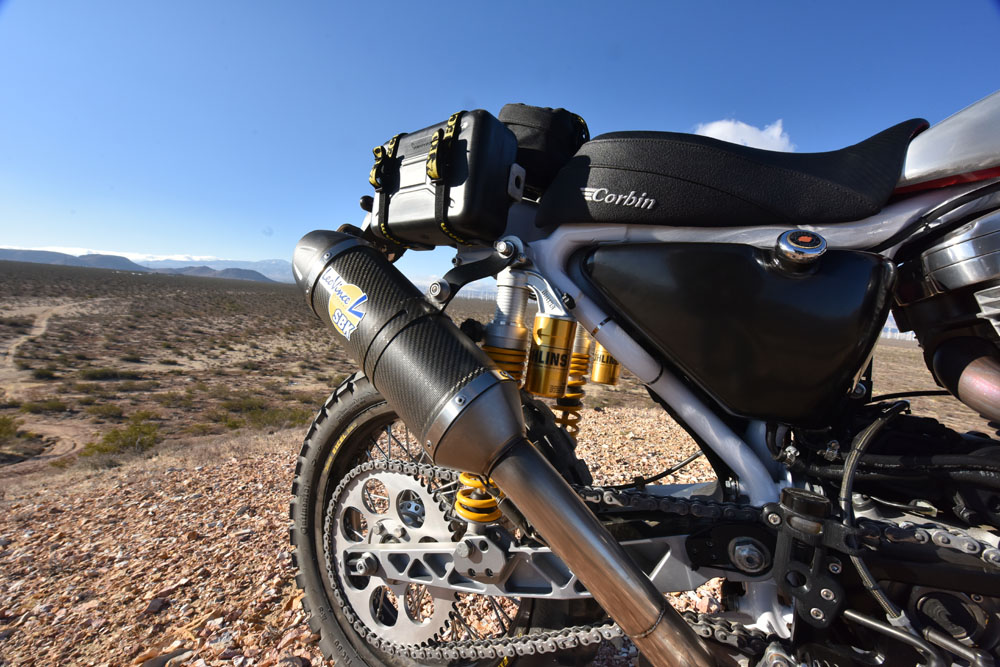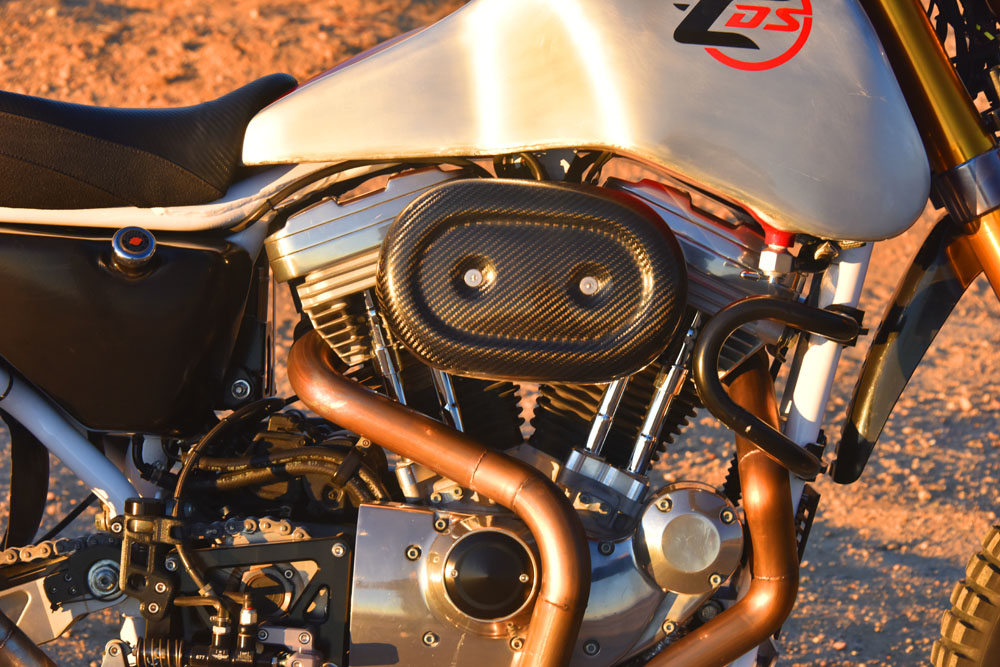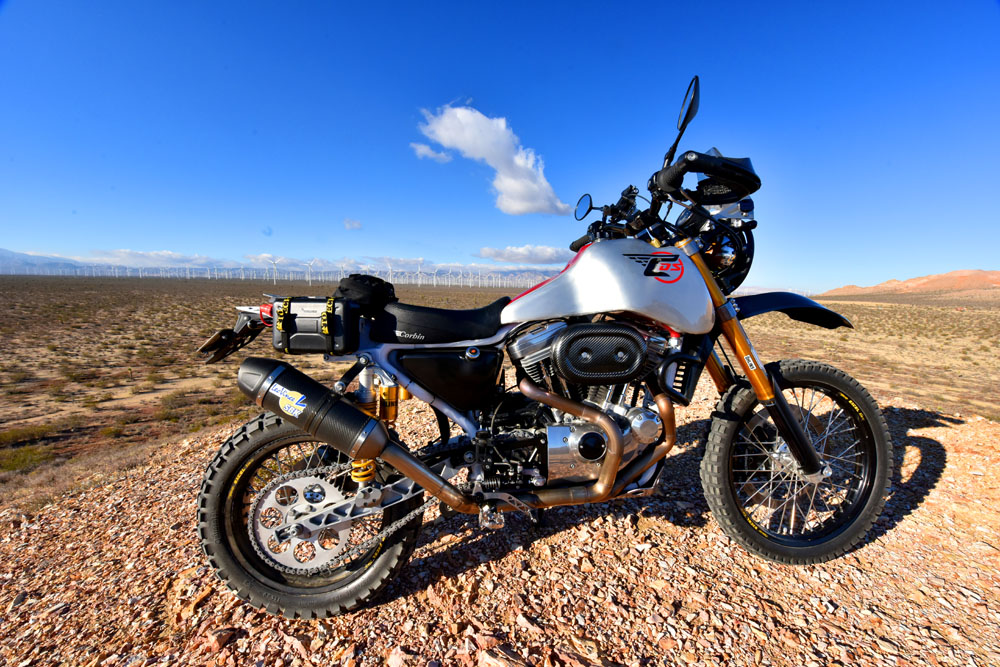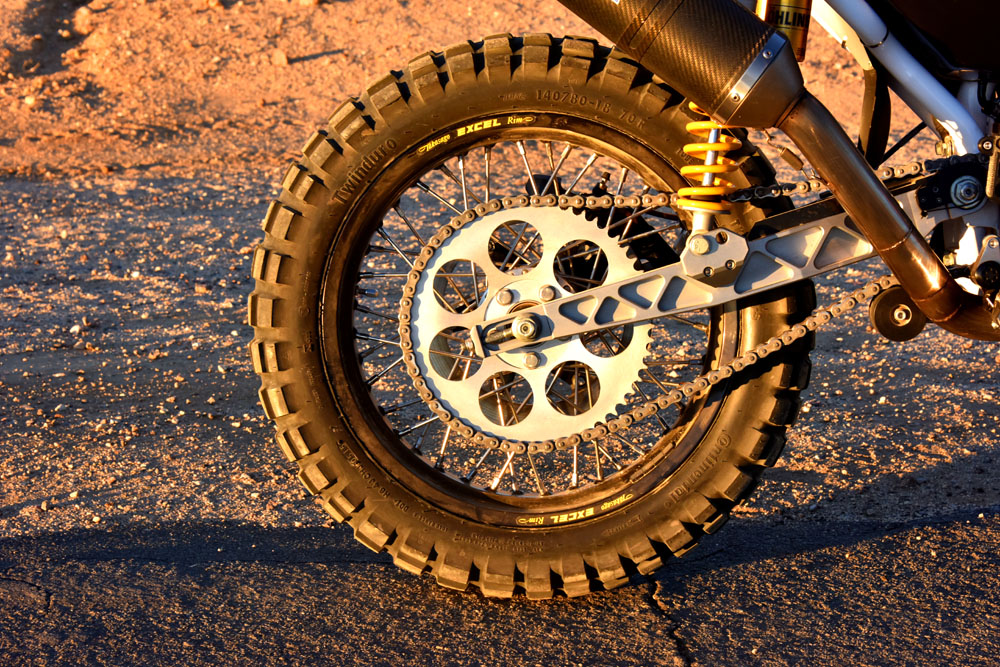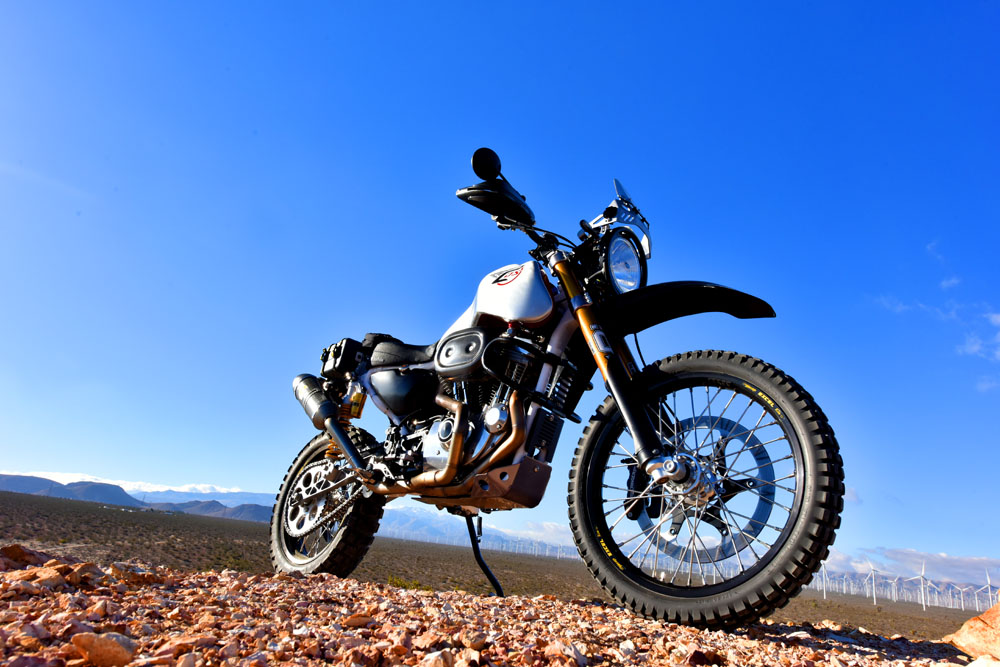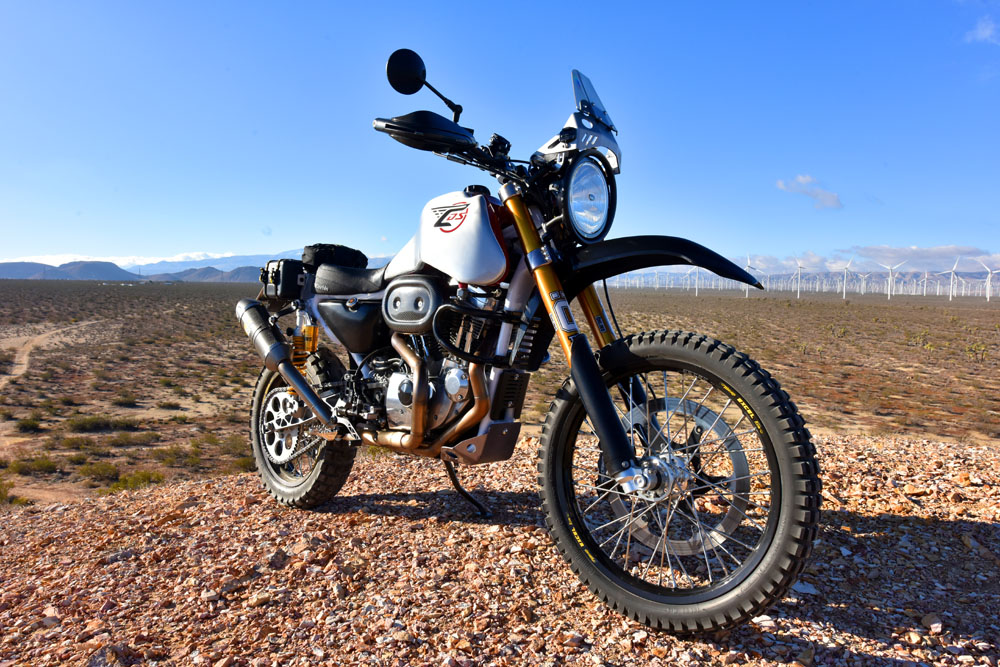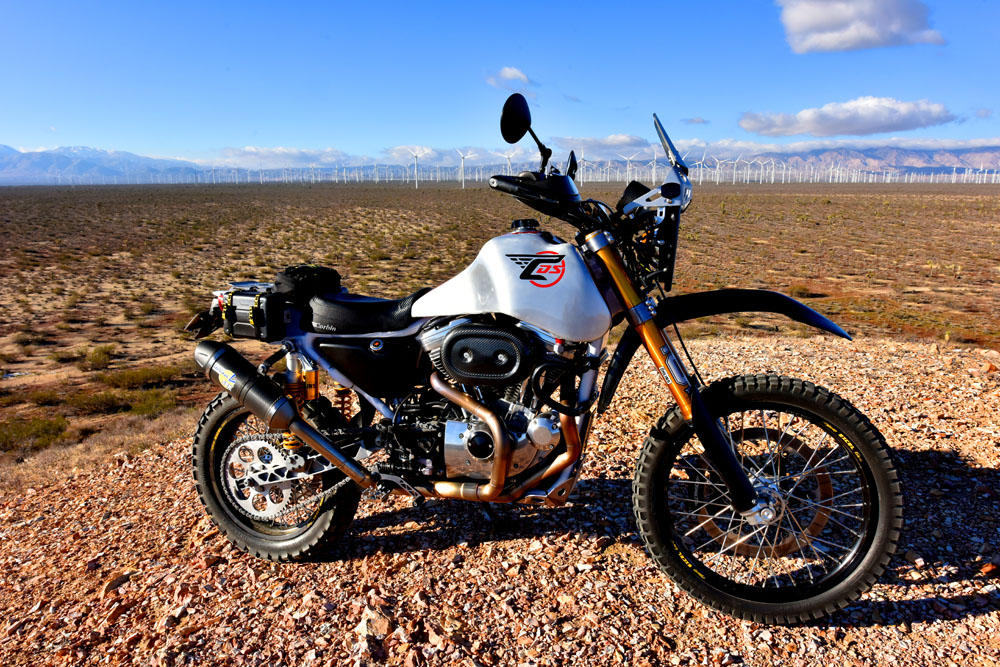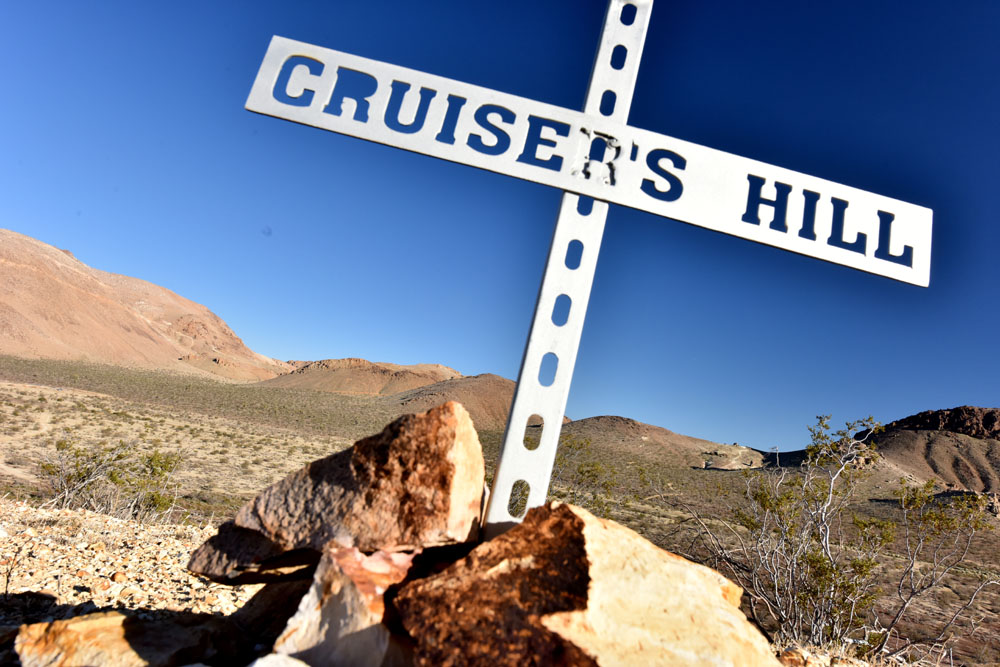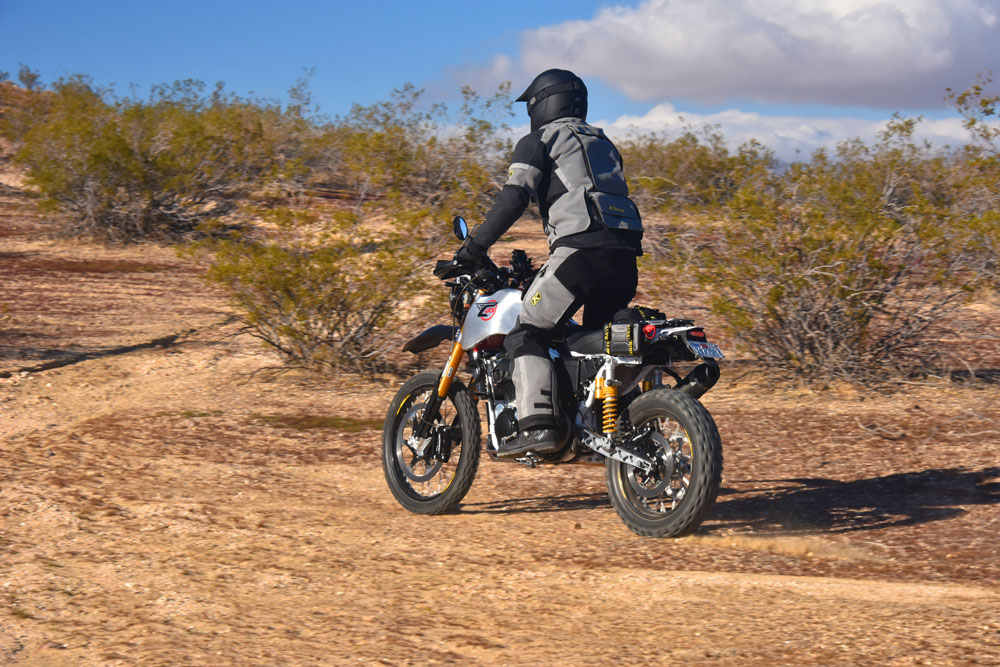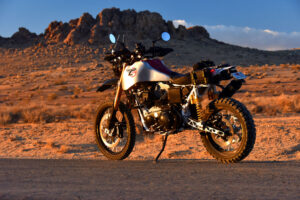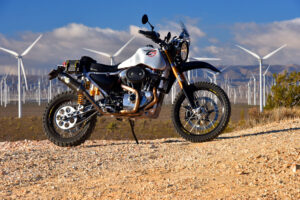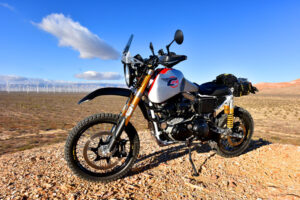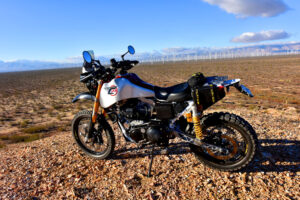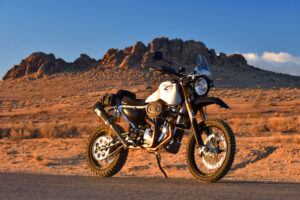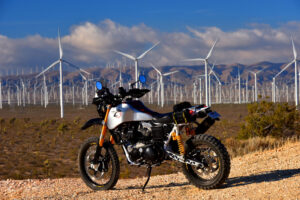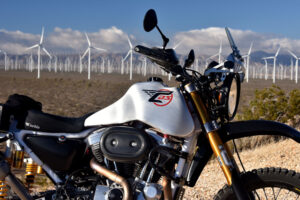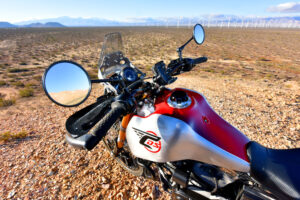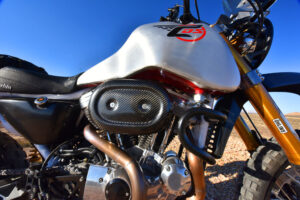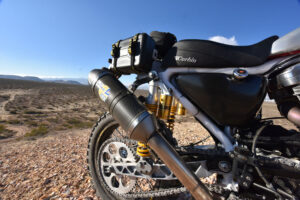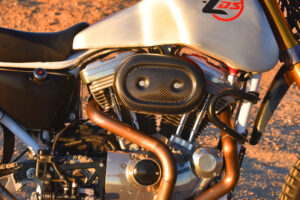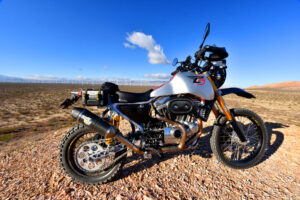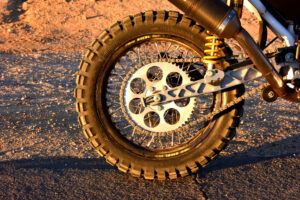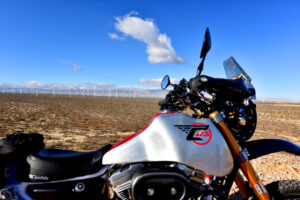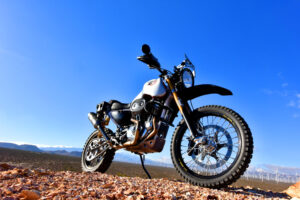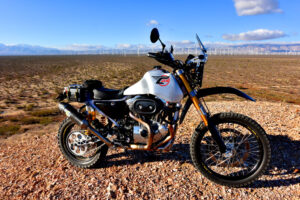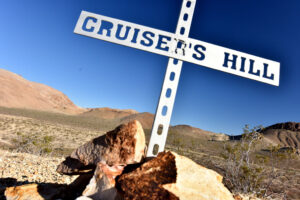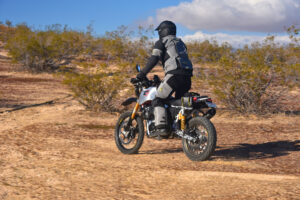I bought the donor 2003 H-D 883 Sportster on December 31, 2010. On the next day, January 1st 2011, I began tearing it apart and started the reverse engineering measuring the parts that I would keep and design around, like the engine and frame and a few others. The unneeded parts were donated to a moto club co-op in San Francisco, CA.
6 months later I had a rolling prototype, the SC3 Adventure, which consisted of the Sportster motor and the frame with some minor mods, a custom designed billet Aluminum swingarm, a KTM 525 front end, a small tracker gas tank, 18” rear wheel and 21” front wheel both with knobby tires, and a hand modified seat that looked pretty bad. The bike worked well, proving the concept and geometry.
I spent the first few months on the CAD system laying out the 2-D architecture side-view before designing and machining any parts. I nailed down the critical geometry: wheel base, rake, trail, rider position, foot controls and handlebar position, and instantaneous force center related to swingarm length and angle. All are key to the bike performing well on road and off.
Once the architecture was set, I began design engineering the components in 3D CAD solid modeling. I now have a complete solid model assembly of the entire bike along with fully documented detail drawings of every part and a complete Bill of Materials (BOM) down to the last nut, bolt, and washer.
The bike evolved over the next three years consisting of refining and adding features like improved suspension, a larger gas tank for longer range, a better seat, a lighter and higher performance exhaust, better brakes, repositioned foot controls, a wind screen, hand guards, and a few other details.
My goal was to build the best performing adventure dual sport around the H-D Sportster motor, and fully document it to be reproducible to spec. I accomplished my goal and have proven the reproducibility by building a second SC3 Adventure thru a controlled build. I bought another donor Sportster, ordered all the parts from our drawings and BOM, and then assembled the bike to spec. The entire process took only 4 months start to finish.
Now that both bikes are done, I’m riding them as much as I can, both on the road and in the dirt. On the asphalt, the SC3 Adventure handles the twisties well. It’s a neutral steering bike that turns effortlessly and at high speeds is inherently stable. Off road in the dirt, the SC3 Adventure is confidence inspiring and loves the open desert roads and sand washes where high speeds are not a problem and the bike is very stable. Watch for our MotoGEO video to come out soon where Jamie Robinson pushes the SC3 Adventure’s limits in the Mojave Desert.
All my riding experiences to date have been positive and I’m having a blast riding it and showing it at motorcycle shows or during rides. The SC3 Adventure grabs a lot of attention everywhere I ride. The only negatives have been not being able to ride it as much as I want. A short term voltage regulator grounding problem drained the battery and stranded me a few times until I solved the problem.
Now that the bikes are both finished, I have more time to go riding, so life is good!
One of the most asked questions I get is “why did I design and build it?” I have a background in engineering disruptive technologies, have been riding Harleys and adventure dual sports for as long as I can remember, and I wanted to combine the two. I would ask myself and my friends and anyone else that would listen, “Why isn’t there a good American adventure dual sport?” and “Will H-D make one?” With my background and experience I knew I could build a good one based on the hard-mount Sportster chassis model years 1993 to 2003. Since the words “H-D” and “Dual Sport” are rarely spoken in the same sentence, once again I was engineering a disruptive product. I knew it would be a controversial build as it has proven to be. Some love it, some hate it, and it always gets plenty of extreme comments.
What’s next? A few things: Now that the SC3 Adventure design is complete and fully documented and patented, it is turn-key ready to be produced in volume. We are looking for a manufacturer to license the design and produce the SC3 Adventure parts, kits, and/or complete bikes, and make them available to purchase.
Following that, we will stick to our core competency of design engineering and prototyping of custom adventure dual sport motorcycles. We are moving on to the next adventure dual sport design … stay tuned for details!
The background story on why I designed and built the SC3 Adventure:
When I was 10 years old, my father’s friend gave me my first ride on a motorcycle – a Honda CB750. I sat in front of him on the gas tank, no helmet, and held on to the center of the handlebars for dear life. We rode on the freeway at a pretty high speed – at least it felt fast to me – and I was hooked from then on.
The next year my mom bought me my first bike, a new 1974 Honda XR75. I’ll never forget it. I immediately took that bike apart all the way down to the frame just to see how it was made, then rebuilt it. That bike unfortunately was stolen in a house break-in and eventually the thief was caught – which led to my second bike. The thief’s parents paid for the replacement cost of the bike since the bike was trashed. We put that money towards a new 1975 Yamaha DT100 – my first street legal dual sport. I didn’t have a driver’s license at the time, but I would ride it thru our neighborhood streets to get to local dirt areas to ride. Soon I ripped all the dual sport lights off the bike, added a plastic gas tank, and made it more off-road capable. That is when I started customizing motorcycles.
My third bike was a new 1977 Yamaha YZ125 which I started racing motocross at our local PAL (Police Athletic League) track. I raced it for a few years and made mods to the suspension and motor myself by making parts in my parent’s garage and buying motor parts with my allowance. Back in the day, we didn’t have the internet, so I found parts from magazines and then bought them from our local motorcycle shops or thru the mail. The racing ended when I turned 15-1/2 years old and bought a 1978 Yamaha RD400 street bike. The serious customizations started when I transformed that into a café racer by doing mods and bolting on custom parts.
From that time on, I’ve had many bikes over the years and I’ve always liked Harleys for as long as I can remember. I’ve had a number of them over the years including a Buell X1. I’ve also been dual sport riding since I was a kid. As long as I can remember, I’ve wanted a Harley that was dual sport capable. Years ago, Harley made a dirt bike and also a 2-stroke dual sport, but I wanted to see their Sportster turned into a dual sport. As a California kid, I remember watching the TV series “Then Came Bronson” where actor Michael Parks rode a Sportster around California. Parks was always riding it off-road when he could. I think that’s where the obsession of wanting to make my own Harley Sportster dual sport began, and also my desire to do rides like he did: Adventure Dual Sport riding.
